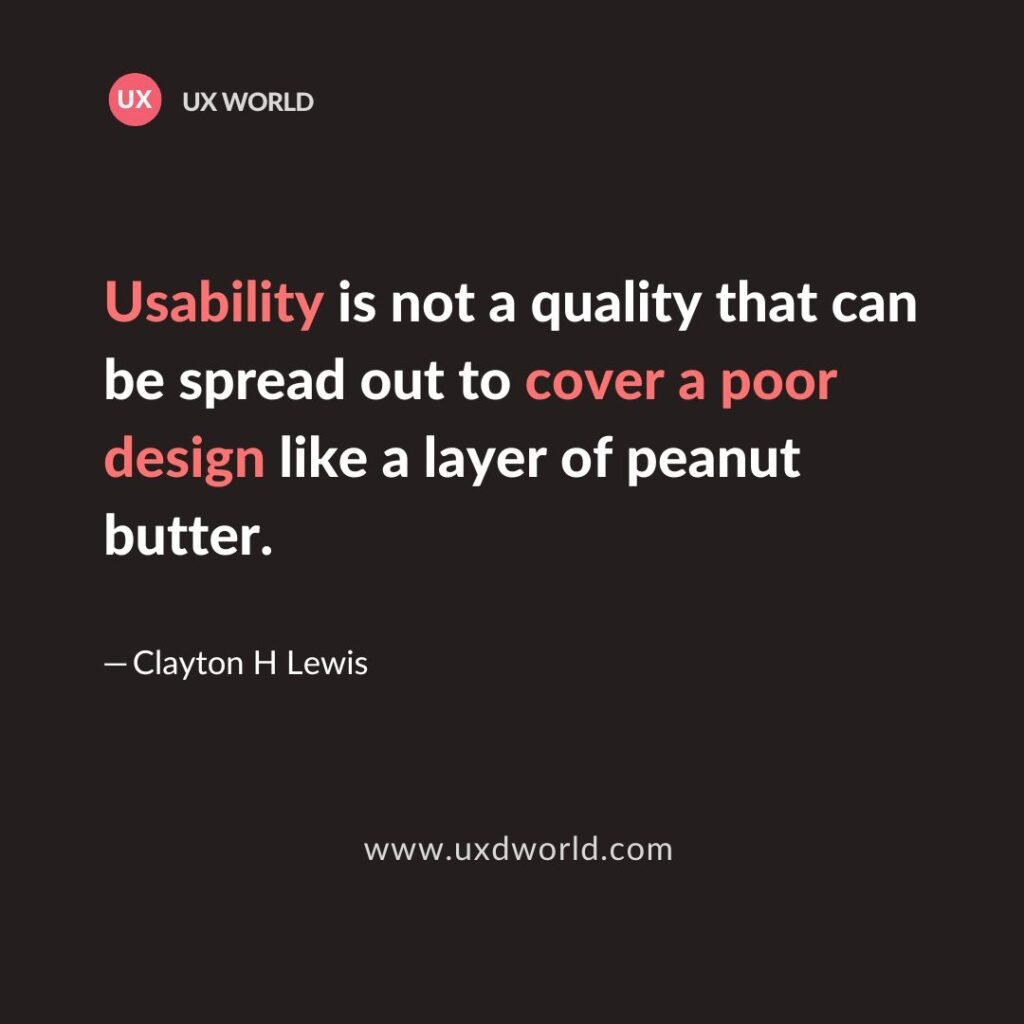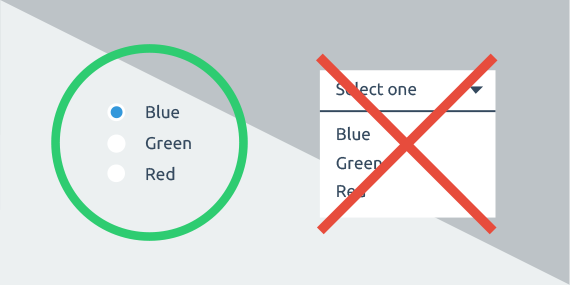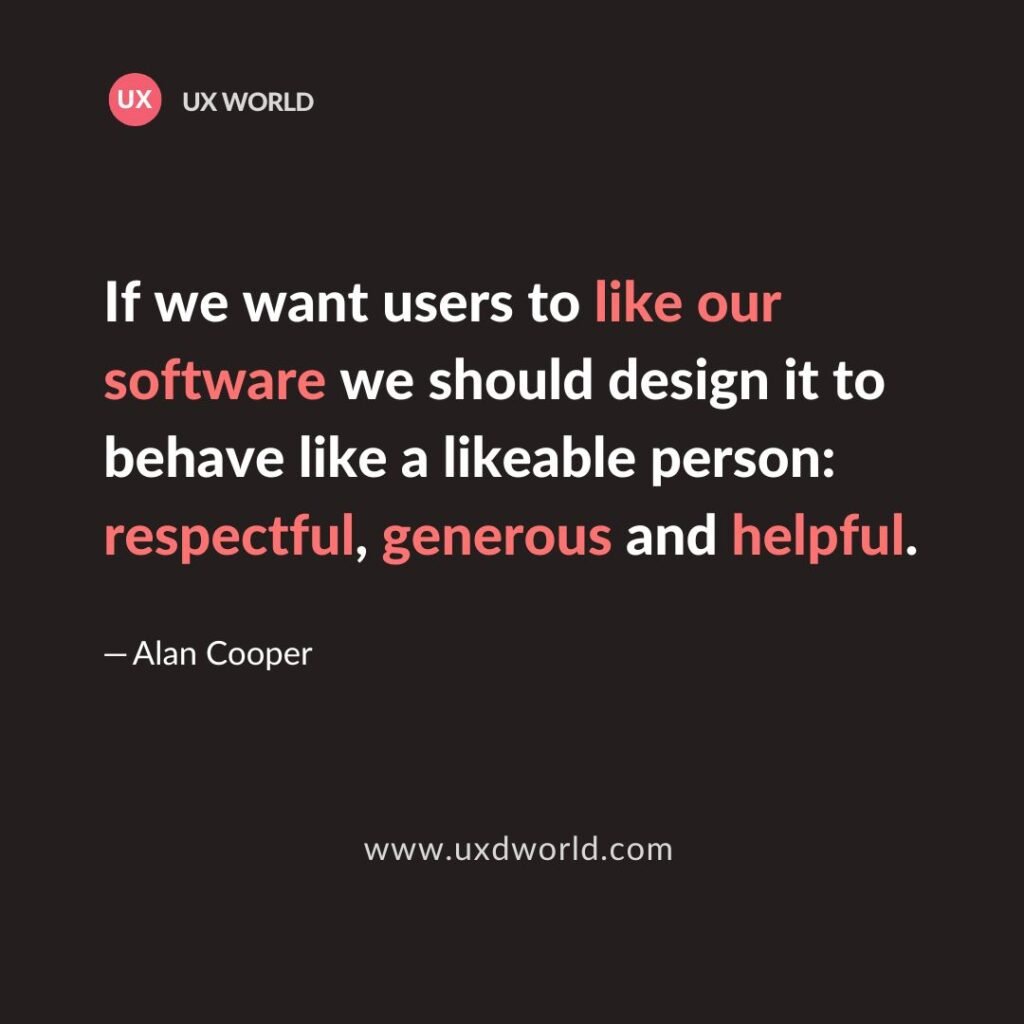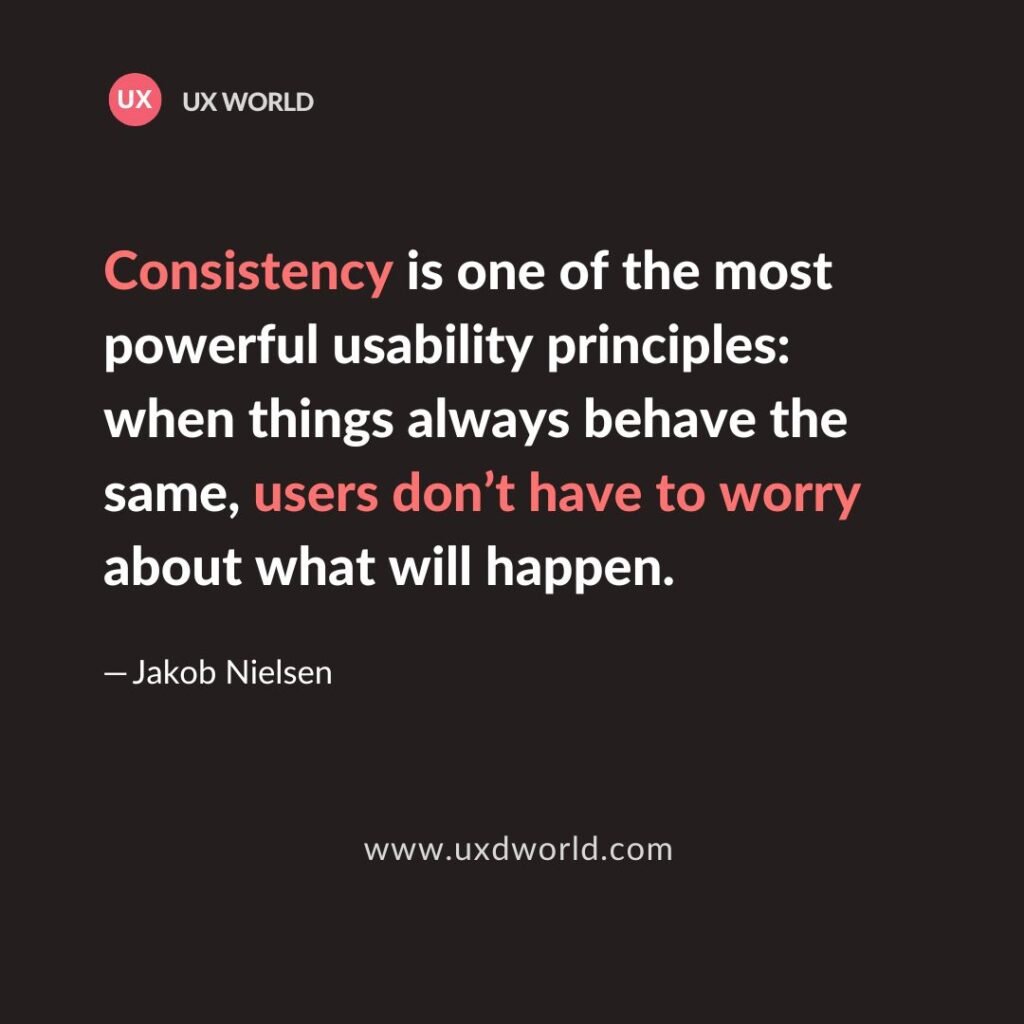Last Updated on May 27, 2024 by UX World
What is usability?
Usability is the ease of use by which users can work on a product to achieve their goals efficiently and effectively. It is a measure of user satisfaction when they are using a product.
Let’s see how usability can be measured and achieved.
Components of usability
As defined by Jakob Nielsen, usability is defined by 5 components:
- Learnability
- Efficiency
- Memorability
- Error Tolerance
- Satisfaction
Learnability
A usable product is easy to learn. In this busy and competitive world, no one has time to use a product that is difficult to understand.
Ease of use is the first important thing that a user feels in a product, so it needs to be a priority while making design decisions.
Efficiency
An efficient product makes it easier for users to perform their tasks quickly and effectively. If this factor is missing in design, a beautifully designed product will also lose the trust of its users.
Keeping the user’s goal in mind in the design stage helps to achieve this component.
Memorability
A good product does not require the user to memorize it. Instead, users should be able to go through the layout and flow easily whenever they come to use the product.
A design should meet human psychological behavior and expectations so that they may not put extra effort into remembering its details.
Error Tolerance
A product’s usability can easily be measured by the way it responds to human errors. A usable product tries to resolve errors seamlessly.
If an error requires the user’s input, then the design should handle it gracefully by providing meaningful and polite error messages. This principle also needs to be considered during each stage of the design process.
Satisfaction
This usability component requires providing a pleasant and satisfactory user experience. If a user comes to use a product, he should be able to accomplish his goals in a way that he wants to come back again to the same product.
Making user satisfaction a priority in the design process helps to build a good relationship between the user and the product.
What will happen if a product is not usable?
See what can be the results when we ignore usability components in our design process.
- It is difficult to learn the product.
- There are chances of more errors, and hence more error handling needs to be done in designing the product.
- Since it is a difficult-to-use product, it requires more cost to support users.
- The trust of users is lost if they get unexpected behavior from the product.
- Making changes on user demand becomes expensive since the product is not flexible.
How do we ensure usability?
The two most important ways to ensure product usability are:
1. Make it part of the design process
Usability is a factor that should be made part of the design process from the beginning. It is not a decorative thing that can be applied after creating an ordinary design.
It should be taken care of at each stage of the design process from requirement analysis to implementation and testing.
2. Perform usability testing
To ensure the usability of a product, usability testing can be performed at various stages of design.
A usability test is conducted on paper prototypes and sketches to verify initial design ideas. Usability testing can also be done when the design is completed before going towards implementation. Prototypes can be used for this purpose. Testing of a complete product is also possible after it is created.
You can use different tools and techniques to get user feedback at any design stage.
So what is concluded?
This analysis clarifies the importance of usability in a product’s life cycle. If a product is not usable for its users, then the chances of its failure are high. Usability is an essential factor that plays a vital role in the success of a product.
“A usable product is the one that benefits its users and meets the business objective of its creator. “
Each component of usability needs to be part of the design process.
It is not a thing that can be injected into a poor design to convert it into a usable experience overnight. It requires days and nights of effort to make a product usable while creating it.
Related articles:
Want to Learn UX Design?
Try Interaction Design Foundation. IxDF offers online design courses that cover the entire spectrum of UX design, from foundational to advanced level. As a UX Design World reader, you get 25% off your first year of membership with the IxDF.
Thanks for reading.
Subscribe for more related articles at UX World.
If you have any questions, contact here: Facebook | YouTube | Twitter | Instagram | Linkedin



